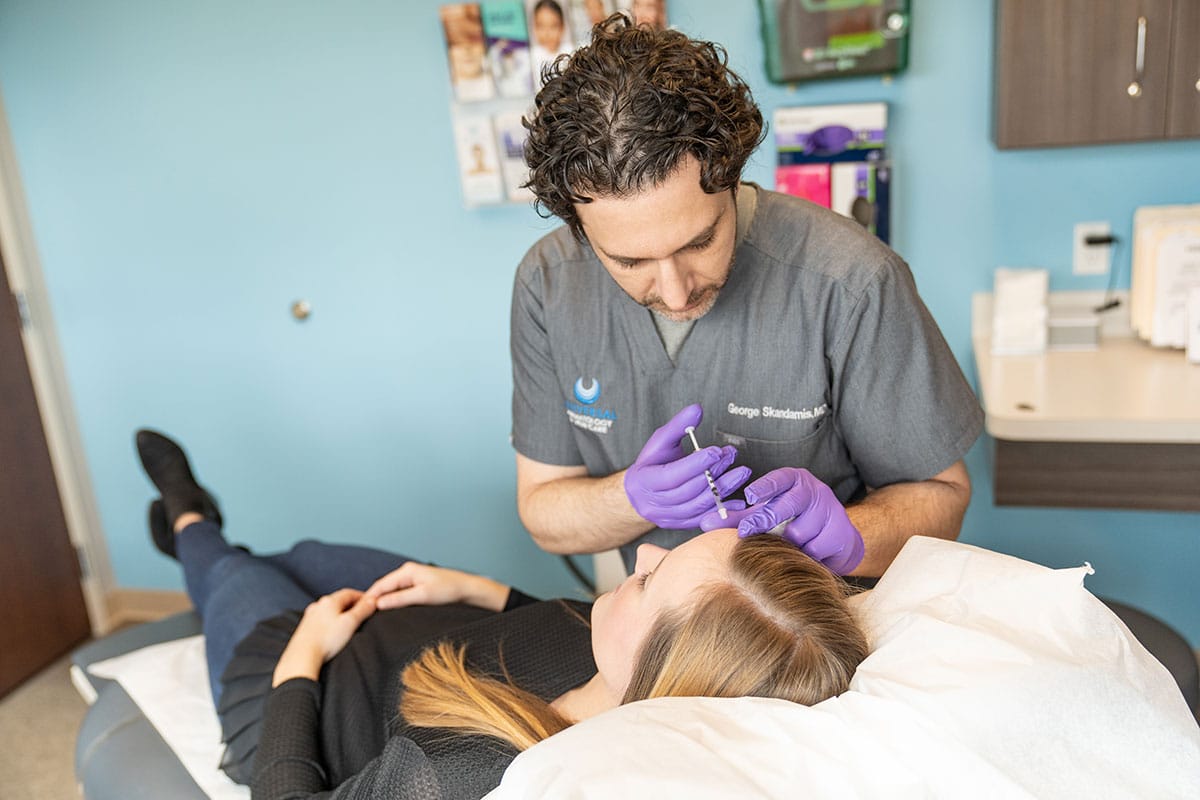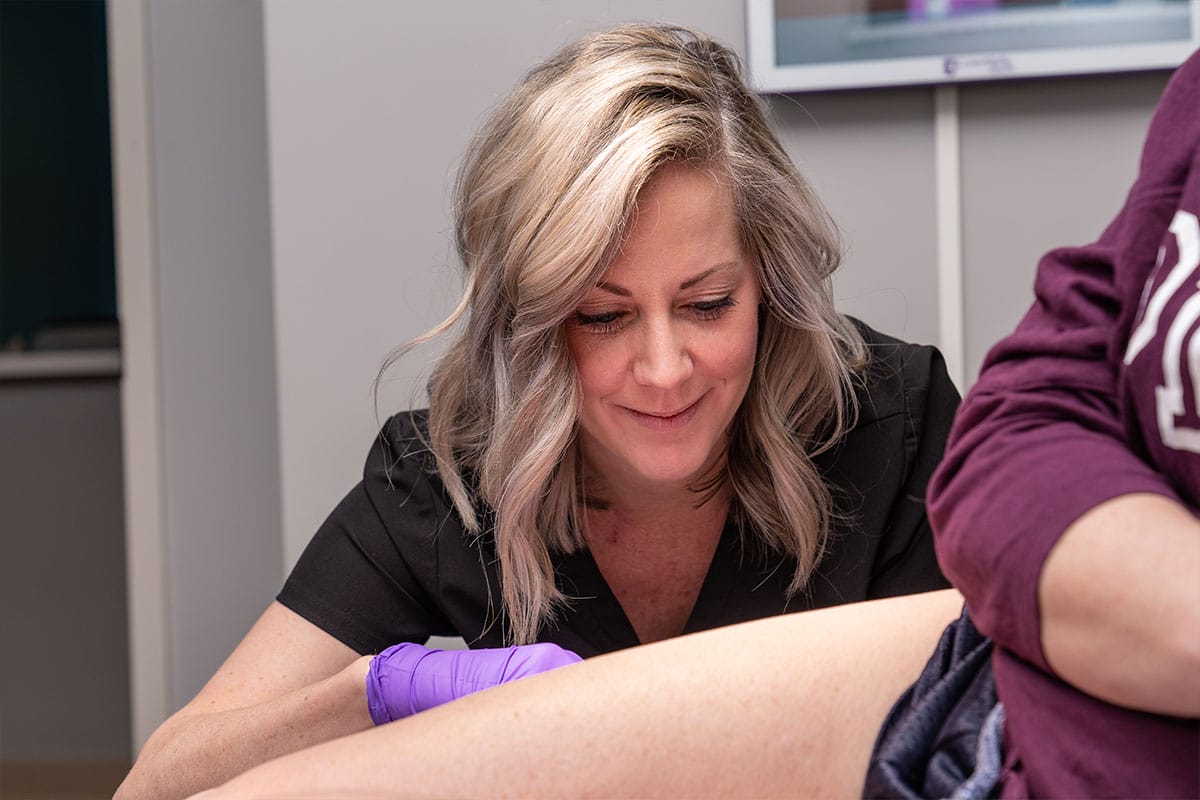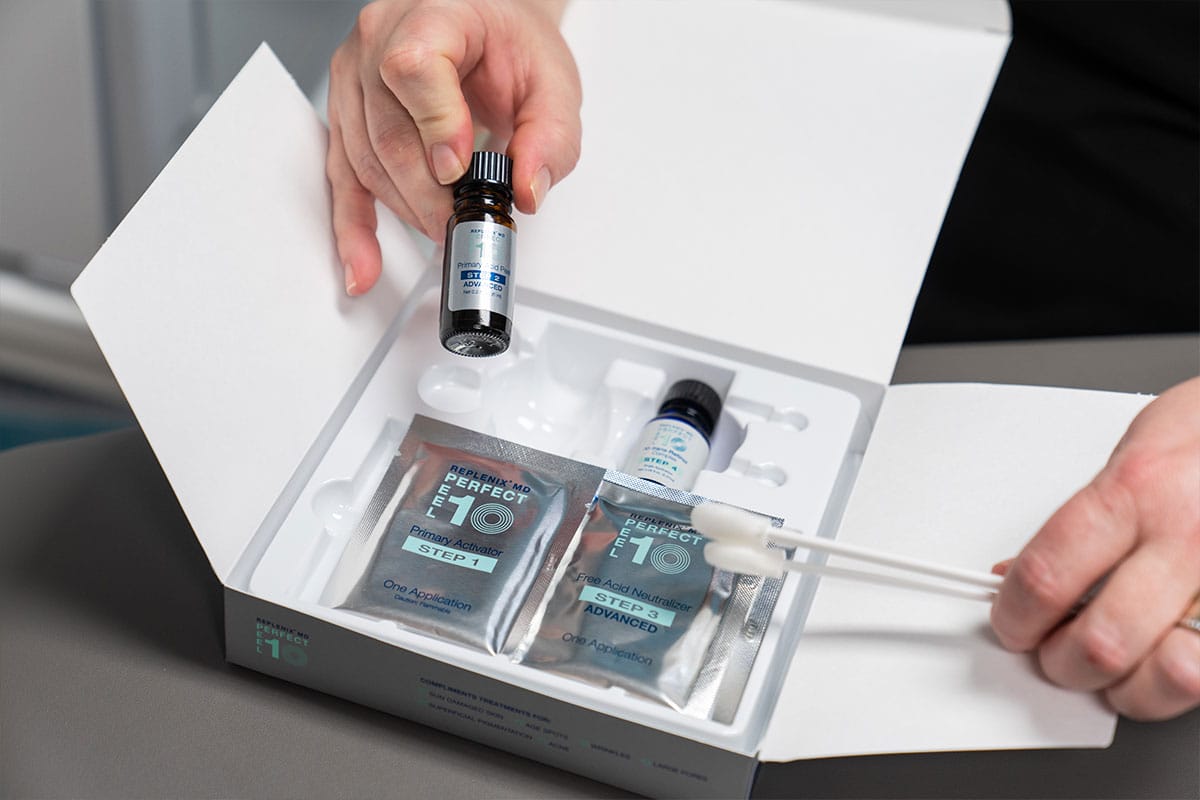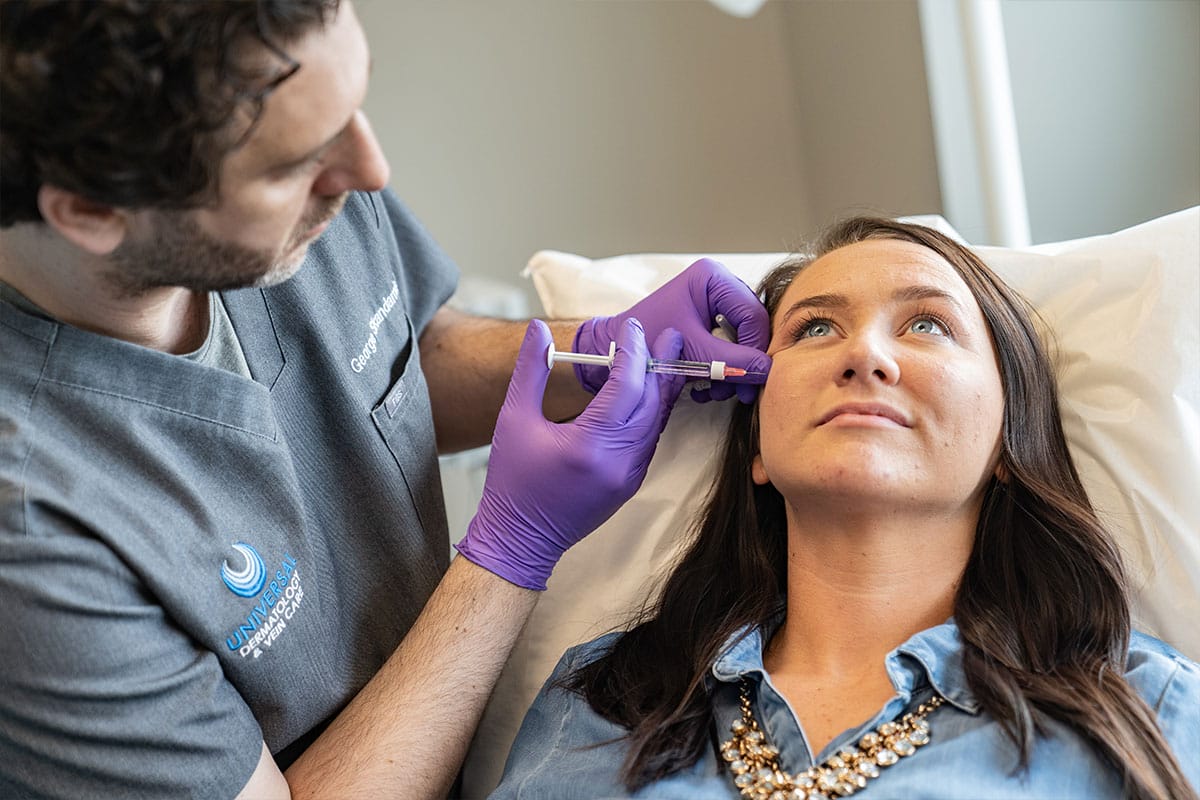Patch Testing for Contact Dermatitis
 Have you experienced redness and irritation after using a skin-care product or trying out a new detergent? How about a skin reaction with no explanation? If so, you may have suffered from contact dermatitis, which occurs when contact with chemicals causes irritation or allergic reaction. Although most cases are not severe, contact dermatitis can be unpleasant and also frustrating if the cause is not clear.
Have you experienced redness and irritation after using a skin-care product or trying out a new detergent? How about a skin reaction with no explanation? If so, you may have suffered from contact dermatitis, which occurs when contact with chemicals causes irritation or allergic reaction. Although most cases are not severe, contact dermatitis can be unpleasant and also frustrating if the cause is not clear.
Allergic Contact Dermatitis
Allergic contact dermatitis is an immune response to an allergen. It can be itchy and can also make the skin dry, flaky, or scaly. However, the symptoms associated with this allergic reaction depend on your skin’s sensitivity. This substance may bring about other symptoms including oozing blisters, redness, leathery appearance, burning sensation, hives, sun sensitivity, and swelling.
Patch Testing and Why It’s Necessary
If you already know what you’re allergic to, that’s great! It will be much easier for you to avoid these chemicals and ingredients. However, if you came in contact with an allergen by accident, it is best to consult with a dermatologist to get the skin treatment you need. For those who suddenly develop patches of dermatitis due to unknown causes, patch testing is necessary.
Metals, leather, rubber, and cosmetics, for example, contain a number of chemicals that can cause allergic reactions. Through patch testing, you and your doctor will be able to identify the allergen. This will help your dermatologist determine which treatment is right for your skin and will be able to help you avoid the allergen in the future.
How Does Patch Testing Work?
An experienced dermatologist will perform the patch test. During the test, small amounts of certain substances are applied to your skin and secured with hypoallergenic tape. These are usually placed on the upper back to ensure they are not disturbed. You will need to come back after 48 hours to get the patches removed. At this time, your dermatologist will do a thorough examination of your skin’s reaction to the substances. Two additional days later, the specialist will examine the spots again to see if there is any delayed reaction.
Dermatologists have a standard set of substances they test on individuals with suspected Allergic Contact Dermatitis. This includes Balsam of Peru, benzocaine, lanolin or wool alcohols, rosin, rubber accelerators, quaternium-15, formaldehyde resin, formaldehyde, p-tert butylphenol, plants, paraben mix, paraphenylenediamine, nickel, neomycin, fragrances, imidazolidinyl urea, ethylenediamine, cobalt, epoxy resin, clioquinol, and chrome. This list includes additives in leather, ointments, clothes, and other items we come in contact with on a regular basis.
Please note that if your dermatologist suspects other allergens, more patches will be added for testing. This can include substances that you come in contact with in your workplace or substances contained in your specific makeup or creams. Bringing in samples of the products you use would also be useful to your doctor, especially if you suspect one of these products is causing the allergic reaction.
Test Results
Once the test results are in, your dermatologist will be able to give you details on what caused your recent allergic reaction. Your dermatologist will give you advice on how to avoid the substance you are allergic to. If the results reveal that you do not suffer from allergic contact dermatitis, you will be able to rule it out and your doctor can proceed with other tests to determine what is causing the skin irritation.
Irritant Contact Dermatitis
If an irritant caused the contact dermatitis, the symptoms are slightly different. This can include skin blistering and cracking because of extreme dryness, stiff or tight skin, swelling, ulcerations, and open sores. This form of contact dermatitis is caused by skin injuries due to environmental factors, chemicals, or friction. The severity of the condition can vary depending on the strength of the irritant, frequency or length of exposure, and skin susceptibility.
Solvents you have come in contact with including detergents, metalworking fluids, adhesives, acid, alkalis, friction, and water can also cause it. Sometimes, two or more of these irritants act together in irritating the skin.
Anyone can experience irritant contact dermatitis if they come into contact with an irritant. However, those who suffer from atopy (a predisposition to allergic reactions) are more susceptible to the condition.
Testing for Irritant Contact Dermatitis
Because this condition can coexist with allergic contact dermatitis, your dermatologist may decide to perform the test to rule this out. The rash typically heals on its own as long as you avoid exposure to the irritant, but special treatment is available if needed. Be sure to contact your dermatologist to get the right treatment for the condition.
If it’s necessary that you handle the irritant again, make sure to cover up and protect your skin. However, try to avoid them altogether if possible.
Patch testing is important to prevent and treat redness, irritation, and itching caused by contact with an allergen or irritant. If you think you may be experiencing contact dermatitis or would like to prevent it, contact us today.
Related Posts
Tips For Rosacea During Spring
Spring has sprung and so has flare-ups from rosacea. Many patients have...
Patch Testing for Contact Dermatitis
Have you experienced redness and irritation after using a skin-care product or...
Psoriasis: What It Is & How to Treat It
Healthy skin can make us feel better about ourselves as we put our best face...
Common Skin Contact Allergens
Every year, Americans spend $18 billion for allergy-related ailments. This...

 Our Dermatologists
Our Dermatologists Our Providers
Our Providers Our Staff
Our Staff Specials
Specials Financing
Financing Pay Bill Online
Pay Bill Online